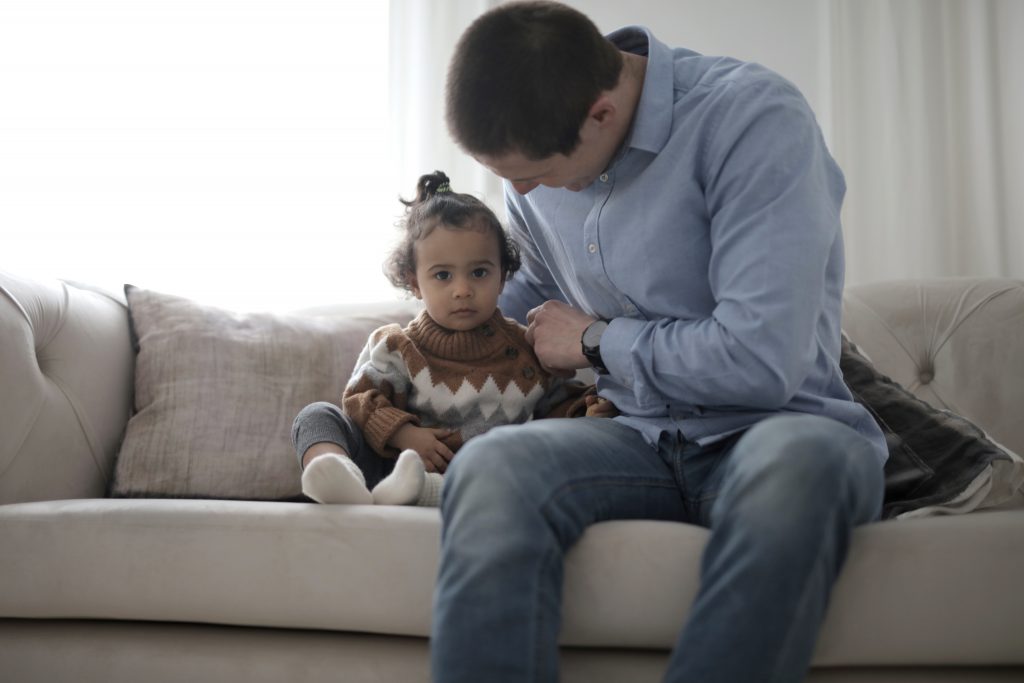
by Ariel Guerrero, Northwestern Class of 2021, Spring Intern 2020
Here at Tuesday’s Child, one of the first things you will learn is how to use praise in order to increase desired behaviors from your child. Learning how to implement praise into your daily routine can be difficult, and even impossible to imagine. However, utilizing PRIDE: Praise, Reflect, Imitate, Describe, be Enthusiastic (Gallagher, 2003) can make this transition easy with just a little practice.
Why Praise?
Praise is an important aspect of behavioral management, parent-child intervention therapy, and other intervention strategies. Based on several research studies, praise has been proven to increase compliance and other positive behaviors both at home and in the classroom (Stormont, Smith, & Lewis, 2007).
When a behavior is followed by a pleasant consequence (such as praise, attention, or rewards), the behavior will increase. This helps children recognize and learn what behaviors we want to see more of — both small and big. And in order to increase wanted behaviors from your child, your goal as a parent is to catch your child being good!
How To Implement Praise: Remember PRIDE
Praise appropriate behavior
- Praising appropriate behavior is exactly what it sounds like. When you see your child engage in behavior that is desired, you verbally encourage that behavior through praise (Gallagher, 2003).
- Some examples:
- “I like the way you are using your walking feet.”
- “You are doing such a good job eating your snack.”
- “Great job helping me clean up!”
Reflect appropriate talk
- Reflecting appropriate talk is meant to encourage positive communication between your child and yourself. When your child uses appropriate words and engages in the desired behavior, give them attention by participating in the conversation (Gallagher, 2003).
- Some examples:
- Your child says, “I really like this snack.” You would respond by saying, “This snack is really good.”
- Your child says, “I love playing with puzzles.” You would agree and say, “These puzzles are super exciting,”
Imitate appropriate play
- Imitating appropriate play is meant to praise your child physically by encouraging behaviors by repeating the same action. When your child engages in a desired physical behavior, repeat that same behavior to let your child know that they are acting appropriately (Gallagher, 2003).
- Some examples:
- If your child puts away toys nicely, imitate that behavior and put toys away nicely as well.
- If your child writes their name on a piece of paper, write your name on a piece of paper.
Describe appropriate behavior
- Describing appropriate behavior is also known as verbal following. When you see your child engaging in the desired behavior, you verbally make a note of the behavior (Gallagher, 2003).
- Some examples:
- If your child eats dinner quietly, you would respond by saying, “Daniel is eating his dinner quietly. He is eating all of his food.”
- If your child holds onto a transition toy while walking on the sidewalk, you would say, “John is holding onto his transition toy! He is keeping his hands clean.”
Be Enthusiastic!
- Ideally, you want to show your child that you are super excited and happy to see their positive behaviors. Therefore, enthusiasm and the use of positive words can help your child recognize your excitement when they engage in good behaviors (Gallagher, 2003).
- Some examples:
- “Wow! You did an AMAZING job putting on your coat!”
- “You REALLY did a good job staying in your seat.”

Catch Them Being Good Instead of Just Ignoring
As a parent, sometimes it might seem easier to just ignore your child when they are not displaying desired behaviors. However, in order for ignoring to work, praise needs to be done at high rates. Differential attention is also a tool that can be used when your child is engaging in disruptive behavior that does not cause harm to themselves or others.
Some examples:
- While your child plays with toys on the carpet, you praise them for playing with the toys gently. Suddenly, your child throws the toy. Your job is to not acknowledge this act. Instead, wait for the child to pick up another toy gently. You would then smile and enthusiastically praise the child for playing gently.
- Your child wiggles and gets out of their chair during dinner time. Your job is to not acknowledge this act. Instead, wait for the child to come to the table. Try to also praise other family members at the table for sitting still. Once your child returns, smile and enthusiastically praise the child for coming back to the table and sitting in their chair.
The Importance Of Praise and Early Intervention
Tuesday’s Child targets children between the ages of 2-7 since disruptive behaviors exhibit a high degree of stability over time if not treated (Nixon, 2001). Intervention during this period is also preferred because research has proven that intervention is more effective with this population at the preschool age vs. later in life (Gallagher, 2003; Stormont, Smith, & Lewis, 2007).
Engaging in behavior intervention services at a young age sets your child up to be more likely to go into kindergarten and elementary school with the ability to develop appropriate behavior patterns (Stormont, Smith, & Lewis, 2007). Tuesday’s Child’s mission is to aid children and their families during this important stage.
In conclusion, praise — a major component to behavioral intervention and a core philosophy here at Tuesday’s Child — is just the beginning. Praising your child more consistently and with a purpose might feel strange for both yourself and your child at first. However, praise is all about practice and will become the easiest part of your daily routine in no time!
Ariel Guerrero
Northwestern Class of 2021
Spring Intern 2020
REFERENCES
Gallagher, N. (2003). Effects of Parent-Child Interaction Therapy on Young Children with Disruptive Behavior Disorders. Bridges, 1, 1–17.
Nixon, R. D. V. (2001). Changes in Hyperactivity and Temperament in Behaviorally Disturbed Pre-schoolers After Parent-child Interaction Therapy (PCIT). Behavior Change, 18, 168–176.
Stormont, M., Smith, S., & Lewis, T. (2007). Teacher Implementation of Pre-correction and Praise Statements in Head Start Classrooms as a Component of a Program-wide System of Positive Behavior Support. Journal of Behavioral Education, 16(3), 280-290.

